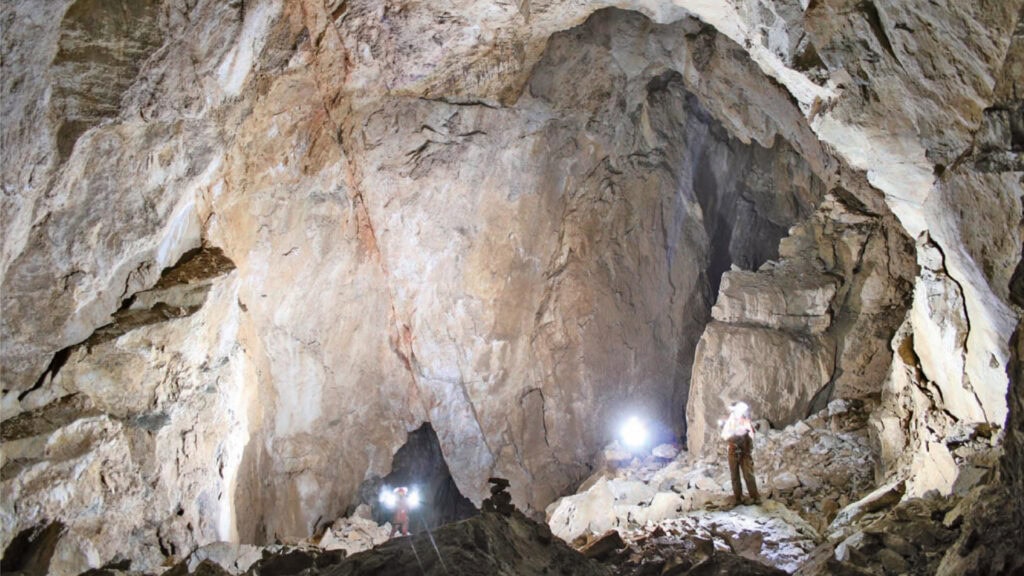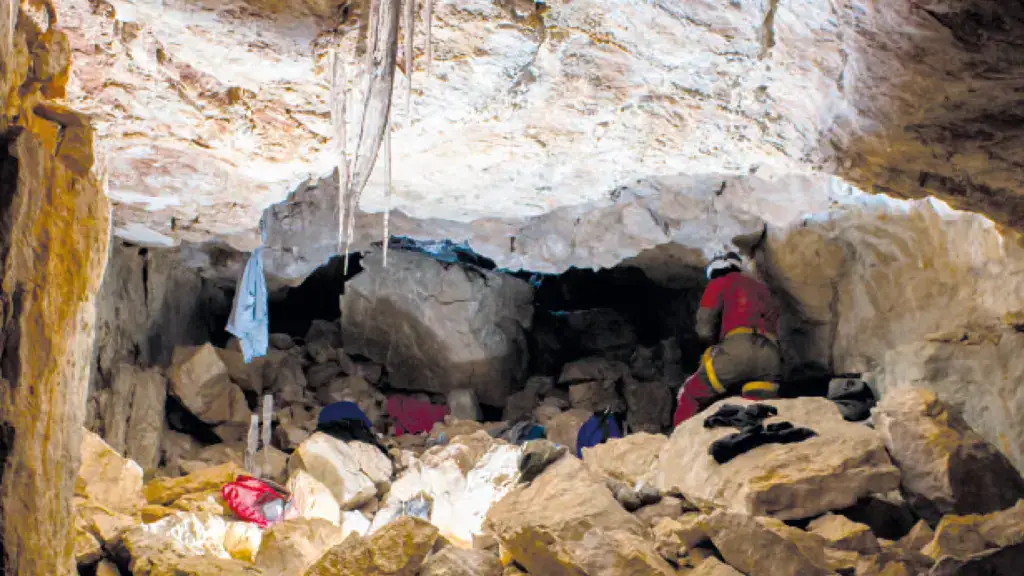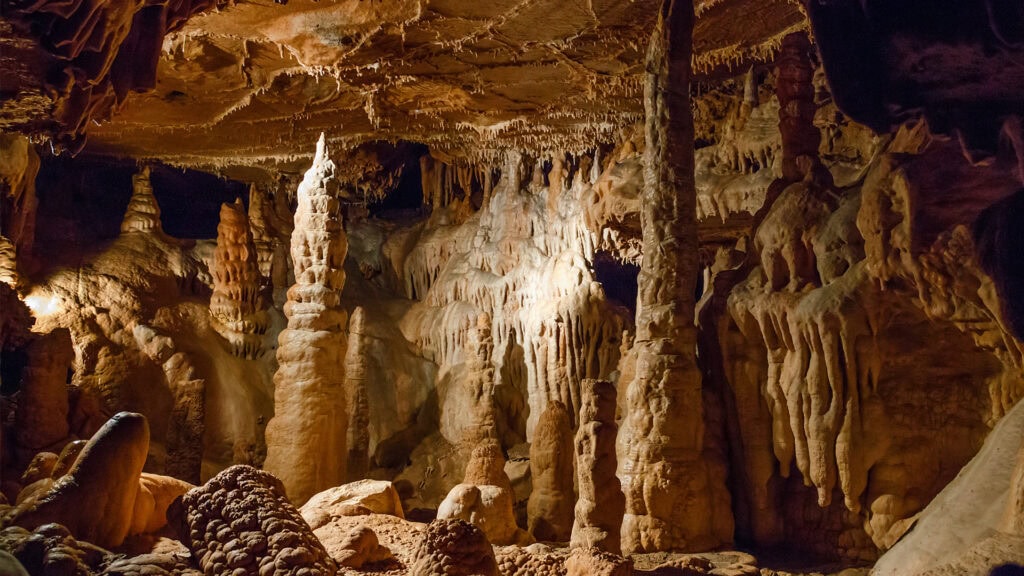Caves and karst passages
Chemical weathering continues deep into the mountain massif. Water penetrates the rock through fissures and cracks, expanding them and forming large cavities and passages over time. These systems can even carry underground streams. Special conditions prevail in caves, the CO₂ content in the air is lower compared to the ground. This causes lime, which was previously dissolved in the water, to precipitate again. This is how speleothems are formed, for example:
- Stalactites: Hanging formations from the cave ceiling
- Stalagmites: Growing formations from the cave floor
The Alps are home to many impressive karst landscapes and cave systems:
The Schönberg Cave System in the west of Totes Gebirge is the longest cave in Austria with a measured length of 155 kilometers and ranks 14th worldwide.

A large passage in the Schönberg Cave system of the Totes Gebirge in Upper Austria. In this dimension, it extends over almost two kilometers. (Images source: Tenreiter 2007, Abb.: 2, S. 87)
Here in the Rofan between Hochiss and Rofanspitze there are also entrances to karst caves.
For example, the Pink Paradiso Cave, whose entrance is located between Hochiss (2299m) and Rotspitz (2067m), the cave has a length of 483 meters and depth of 70 meters.

The entrance hall of the Pink Paradiso Cave of the Rofan. (Image source: Miehlich et al. 2018, Abb.: 3, S. 42)

